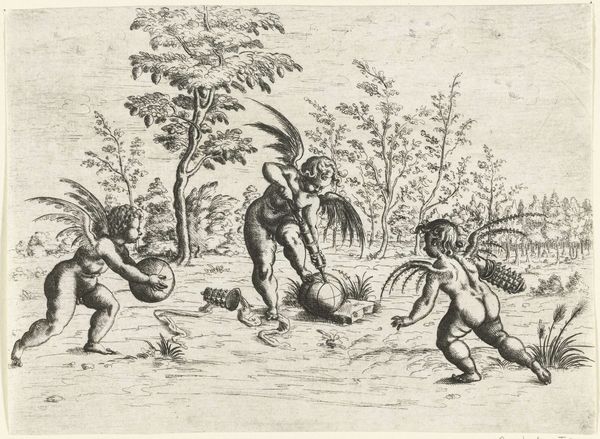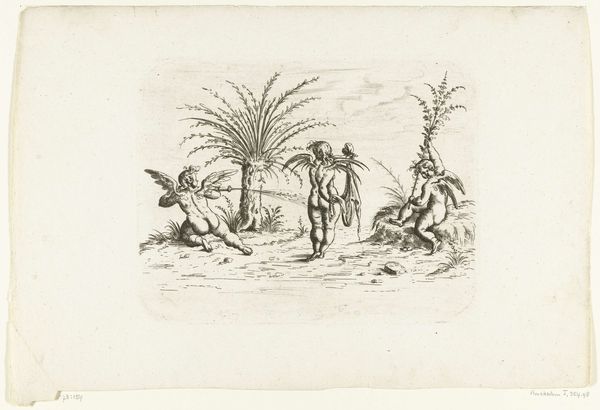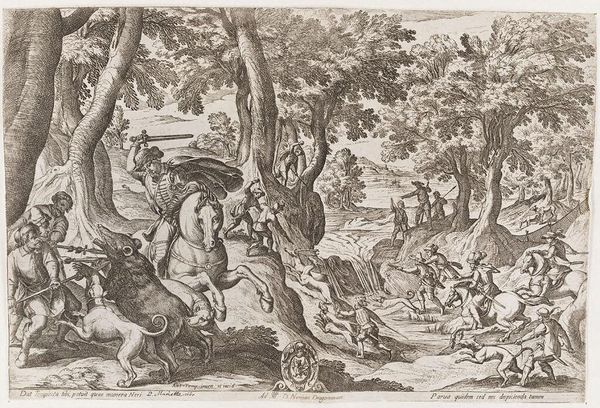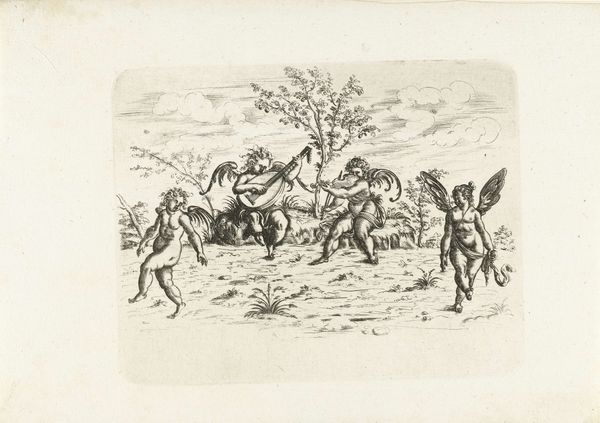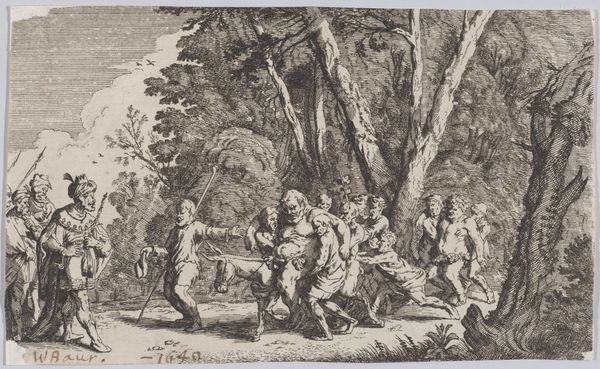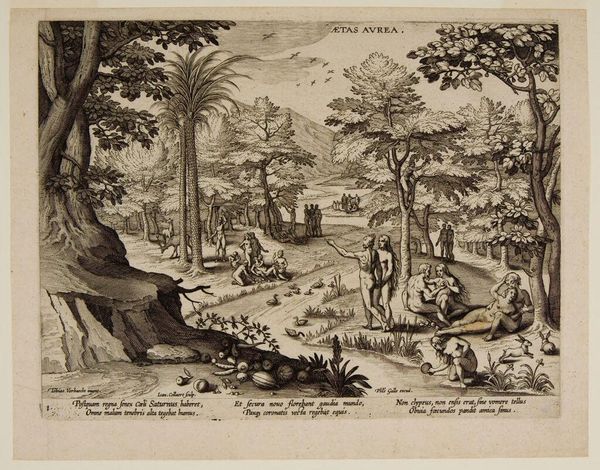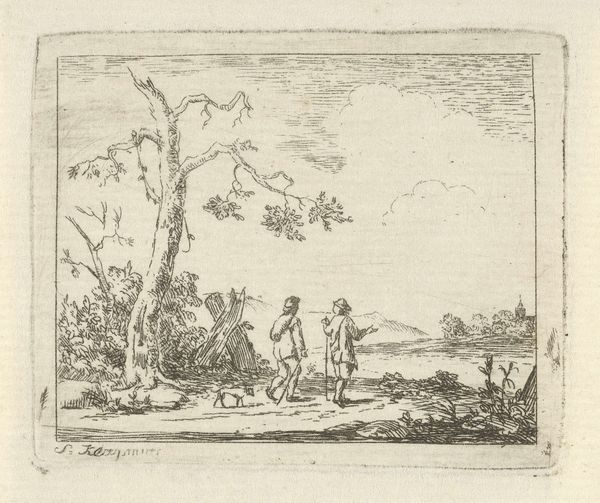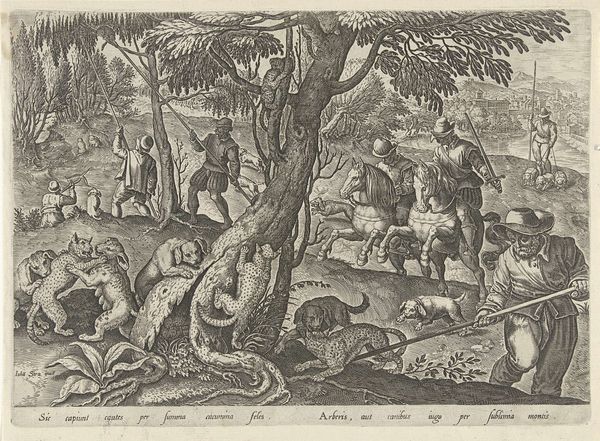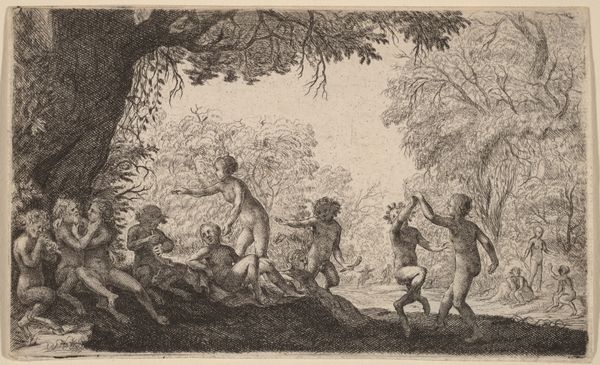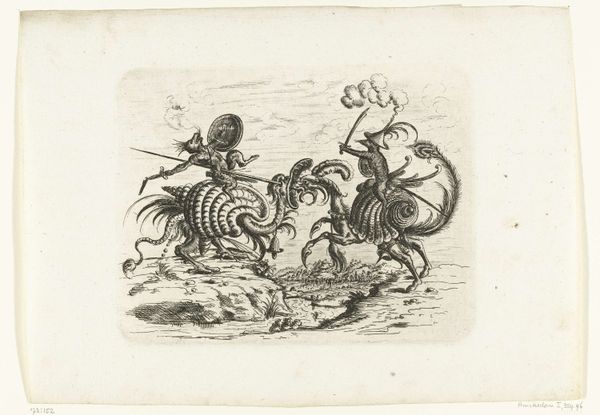
print, etching
# print
#
etching
#
landscape
#
mannerism
#
figuration
#
11_renaissance
Dimensions: height 143 mm, width 181 mm
Copyright: Rijks Museum: Open Domain
Curator: Ah, another trip into the whimsical world of Mannerism! This etching, "Vier Putti," likely crafted between 1573 and 1610, is attributed to Christoph Jamnitzer. Aren’t those little cherubs delightfully mischievous? Editor: Mischievous, yes, but also…claustrophobic? The tight composition and the almost frantic energy of the putti crammed into this little landscape makes me feel slightly uneasy, like witnessing a secret ritual I’m not supposed to see. Curator: That's an intriguing read! I see their confinement as a staged exuberance. Those cherubs are actively frolicking and enjoying the surroundings; the lines may be tight, but aren't those exaggerated, mannerist gestures just fabulous? It is as if Jamnitzer wants to say: look how much beauty and detail can be contained. Editor: Beauty, yes, if we’re comfortable overlooking the inherent hierarchies at play. Aren't these chubby, winged figures idealized European children? This image then reinforces a certain standard of beauty while invisibilizing other children—non-white children, disabled children—who are conspicuously absent from this scene. Curator: You always bring the conversation back to the social dynamics, which, I must admit, always give me a new way to appreciate art! Though the cherubs look indeed like representations of European children, they still possess an imaginative, carefree quality that evokes joy. And this evokes a certain sense of universality to their joyful gestures, no? Editor: Perhaps, but "universality" is often a disguise for dominance. Consider that Mannerism, though aesthetically interesting, also coincided with periods of intense religious and political conflict. This image’s lightheartedness could be a deliberate distraction from social inequalities. Also, consider the fact that prints were destined to wide circulation; those who could afford them likely came from privileged backgrounds. Curator: Well, it appears that we have another point of friendly disagreement. What truly grabs me, however, is Jamnitzer’s clever interplay of textures: the feathery wings, the leafy tree...they are just perfect! But to think it just hides an active, troubled sociopolitical agenda, that thought shakes my foundations. Editor: Exactly. Our interpretation of this work—or any work, really— is shaped by the historical baggage it carries. Recognizing that context is essential for critical engagement. Curator: Indeed, without considering these layers of power and representation, we risk flattening its depth and missing a vital part of the story it tells. What begins as lighthearted Mannerism then opens to something so much more heavy and poignant!
Comments
No comments
Be the first to comment and join the conversation on the ultimate creative platform.
